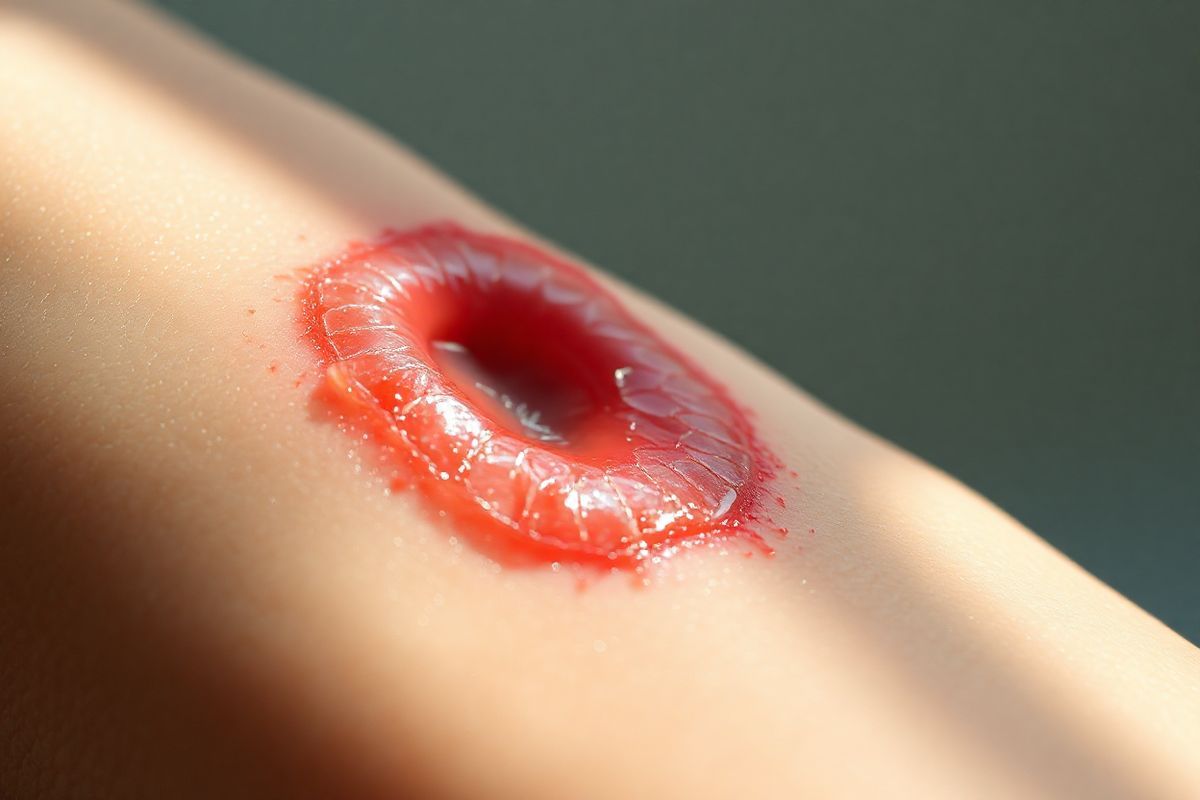Table of Contents
Understanding Fish Skin Grafts: An Innovative Approach to Wound Healing

Fish skin grafts have gained significant attention as a promising solution for wound healing, particularly for severe burns and chronic wounds. The use of fish skin is not merely a novel idea; it is supported by substantial research indicating its effectiveness. Traditional human skin grafts involve taking skin from a donor or the patient themselves, which can be costly and complicated. In contrast, fish skin is a readily available and sustainable resource, often discarded during food processing.
Research has shown that fish skin, particularly from species like Arctic cod and Nile tilapia, possesses unique properties that facilitate healing. The skin’s structure closely resembles human skin, complete with epidermis, dermis, and other layers. When applied to wounds, fish skin serves as a biological scaffold, allowing human cells to proliferate and migrate into the graft, ultimately promoting healing (1).
The Science Behind Fish Skin: How It Mimics Human Tissue
The molecular composition of fish skin is surprisingly similar to that of human skin, which plays a crucial role in its healing properties. Electron microscope studies reveal that fish skin, much like human skin, has a stratified structure that provides a suitable environment for cellular activities essential for wound healing. The collagen fibers in fish skin are particularly noteworthy; they provide the necessary scaffolding for new tissue formation and have been shown to facilitate the migration and proliferation of human cells (1).
In a study conducted by Kerecis, a company specializing in fish skin grafts, researchers found that the skin of wild Arctic cod contains high levels of type I collagen that closely matches that of human skin. The grafting process involves cleaning and sterilizing the fish skin, removing scales and cells, which creates a matrix for human cells to populate. When applied to a wound, the fish skin graft allows the patient’s cells to infiltrate the graft, effectively ‘taking root’ and promoting tissue regeneration (1).
Advantages of Fish Skin Grafts: Cost-Effectiveness and Sustainability
One of the most compelling advantages of using fish skin for wound treatment is its cost-effectiveness. Human skin grafts require extensive processing and storage, making them expensive and less accessible, especially in developing regions. In contrast, fish skin is often a byproduct of the seafood industry, making it readily available at a lower cost. This aspect not only reduces expenses but also minimizes waste, aligning with sustainability goals in healthcare (1).
Furthermore, fish skin grafts have been shown to accelerate the healing process compared to traditional dressings. For instance, the Tilapia Skin Project in Brazil demonstrated that patients treated with tilapia skin experienced fewer dressing changes and a lower incidence of infection, highlighting the graft’s effectiveness in promoting healing (1). The ability to use a natural, biodegradable material that is also effective in wound care presents a dual benefit for both patients and the environment.
Comparative Effectiveness of Fish Skin Grafts and Traditional Treatments
| Treatment Type | Cost (Approx.) | Infection Rate | Healing Time | Dressing Changes |
|---|---|---|---|---|
| Human Skin Graft | High | Moderate | Slower | Frequent |
| Fish Skin Graft | Low | Low | Faster | Fewer |
Potential Risks and Considerations in Using Fish Skin for Wound Treatment

Despite the numerous benefits, the use of fish skin grafts is not without risks and considerations. One major concern is the potential for allergic reactions, particularly in patients with sensitivities to fish. It is essential for healthcare providers to assess patients thoroughly before using fish skin grafts to mitigate any risk of adverse reactions.
Additionally, while fish skin is generally sterile, the processing and handling of the grafts must adhere to strict standards to prevent contamination. Inadequate sterilization could lead to infections, complicating the healing process (2). Moreover, the long-term effects of fish skin grafts are still being studied, and more clinical trials are needed to understand their durability and effectiveness over time.
Future Prospects: The Evolution of Fish Skin Grafts in Medical Practice
The future of fish skin grafts in medical practice looks promising as ongoing research continues to explore their potential applications. Scientists are investigating methods to enhance the grafts’ properties, such as isolating collagen from fish skin to create a more robust scaffold for tissue regeneration. This advancement could lead to the development of new products that leverage the benefits of fish skin while minimizing potential risks (1).
Moreover, as the healthcare community becomes more aware of the advantages of fish skin grafts, we may see increased acceptance and integration of this technology into clinical practice. The success stories emerging from various projects worldwide, such as the Tilapia Skin Project, are encouraging and may pave the way for broader adoption of fish skin in wound care protocols.
Potential Applications Beyond Wound Healing
In addition to wound healing, research is underway to investigate the use of fish skin grafts in other medical fields. For example, studies are exploring their application in reconstructive surgery and as a biological dressing for surgical wounds. The unique properties of fish skin may also provide solutions in areas such as burn care and cosmetic surgery, where tissue regeneration is crucial (1).
FAQ
What are fish skin grafts?
Fish skin grafts are biological dressings made from the skin of fish, particularly from species like Arctic cod and Nile tilapia. They are used to promote wound healing by providing a scaffold for human skin cells to proliferate.
How do fish skin grafts work?
Fish skin grafts mimic the structure of human skin, allowing human cells to migrate into the graft. This process promotes tissue regeneration and accelerates healing.
Are there any risks associated with fish skin grafts?
Yes, potential risks include allergic reactions, infection due to inadequate sterilization, and the need for thorough patient assessment before application.
How do fish skin grafts compare to traditional human skin grafts?
Fish skin grafts are generally more cost-effective, have lower rates of infection, and promote faster healing compared to traditional human skin grafts.
What is the future of fish skin grafts in medicine?
The future is promising, with ongoing research exploring their applications in various medical fields and efforts to enhance their properties for better healing outcomes.
References
-
Fish skin heals the toughest wounds. Retrieved from https://www.drugdiscoverynews.com/fish-skin-heals-the-toughest-wounds-15287
-
How wounds heal: MedlinePlus Medical Encyclopedia. Retrieved from https://medlineplus.gov/ency/patientinstructions/000741.htm
-
How Wounds Heal. Retrieved from https://www.hopkinsmedicine.org/health/treatment-tests-and-therapies/how-wounds-heal
-
Wounds - how to care for them. Retrieved from https://www.betterhealth.vic.gov.au/health/conditionsandtreatments/wounds-how-to-care-for-them











